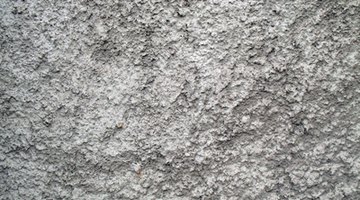How to Repair Efflorescing Plaster
If you see white discoloration or what looks like a powdery, crystalline, white growth on your plaster walls, you have a moisture problem within the walls. This is , and it's caused by soluble masonry salts within the walls leaching to the surface.

Things You Will Need
- Wire or scrub brush
- Drywall knife
- Joint compound or plaster patch
- Fiberglass tape
- Sandpaper
- Primer
Before repairing efflorescent plaster, you must address the moisture--usually by caulking or repairing a roof leak. Once you've solved the moisture problem, fixing efflorescence on plaster is a straightforward task.
-
Remove all the crumbled efflorescent plaster with a wire brush. If it has pushed the paint away from the surface, remove the loose paint, then scrub away the powdery deposit.
-
Wash the plaster with warm water until the residual efflorescence is removed. Use a soft scrub brush if the surface is very pitted and irregular. An alkaline wash for plaster and masonry, found at paint or hardware stores, can be helpful, but it's not necessary.
-
Apply a coat of plaster patch or joint compound over the damaged plaster using a 6- or 8-inch drywall knife. For wide, shallow depressions left behind after you've removed crumbling, efflorescent plaster, use the widest drywall knife possible. They are available up to 12 inches wide.
-
Embed fiberglass mesh drywall tape along the length of any cracks while the plaster is still wet. Allow it to dry for at least eight hours.
-
Coat the patch with at least one more application of joint compound or plaster, extending the compound onto the surrounding surface so you can sand it flush when it dries.
-
Sand the repair smooth with a sanding sponge or drywall sanding pad. Run your hand over the repair to feel for irregularities; it's easier to feel than to see them.
-
Prime the repair. If there are brown water stains or discolorations, use tinted shellac or a stain-blocking primer to prevent the stains from bleeding through the paint.
Tip
Patching plaster or plaster of Paris is harder and more durable than drywall joint compound, but is harder to sand. Don't sand the patching compound between coats. If there are ridges or lumps, scrape them off with the drywall knife. Sanding between coats usually results in a wavy, uneven surface.
Warning
Wear eye protection, especially when scraping and sanding, or scraping above your head.
References
Resources
Tips
- Patching plaster or plaster of Paris is harder and more durable than drywall joint compound, but is harder to sand.
- Don't sand the patching compound between coats. If there are ridges or lumps, scrape them off with the drywall knife. Sanding between coats usually results in a wavy, uneven surface.
Warnings
- Wear eye protection, especially when scraping and sanding, or scraping above your head.
Writer Bio
Stevie Donald has been an online writer since 2004, producing articles for numerous websites and magazines. Her writing chops include three books on dog care and training, one of which won a prestigious national award in 2003. Donald has also been a painting contractor since 1979, painting interiors and exteriors.
Photo Credits
- old plaster background image by KeeT from Fotolia.com
- old plaster background image by KeeT from Fotolia.com
More Articles



